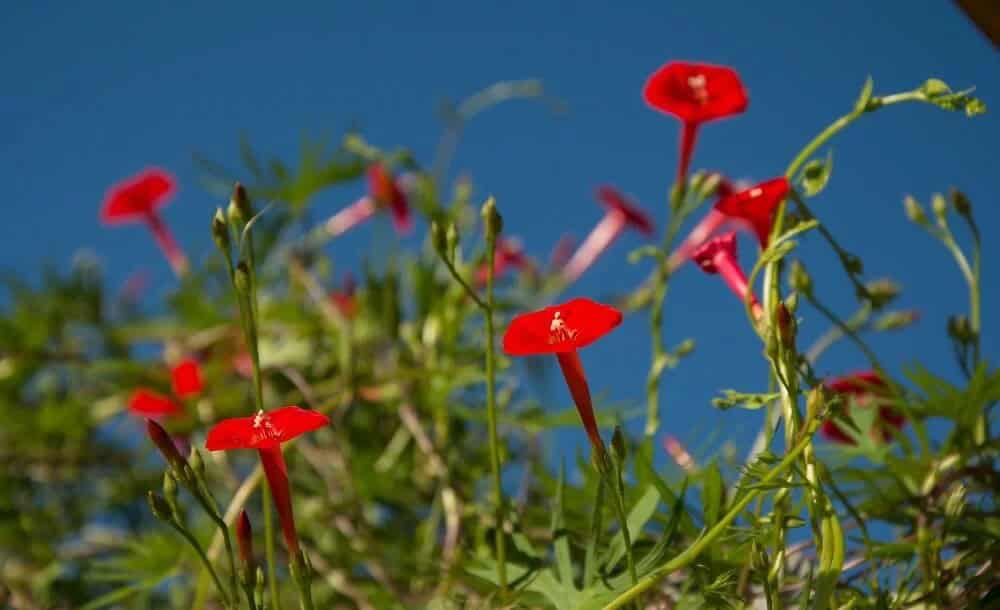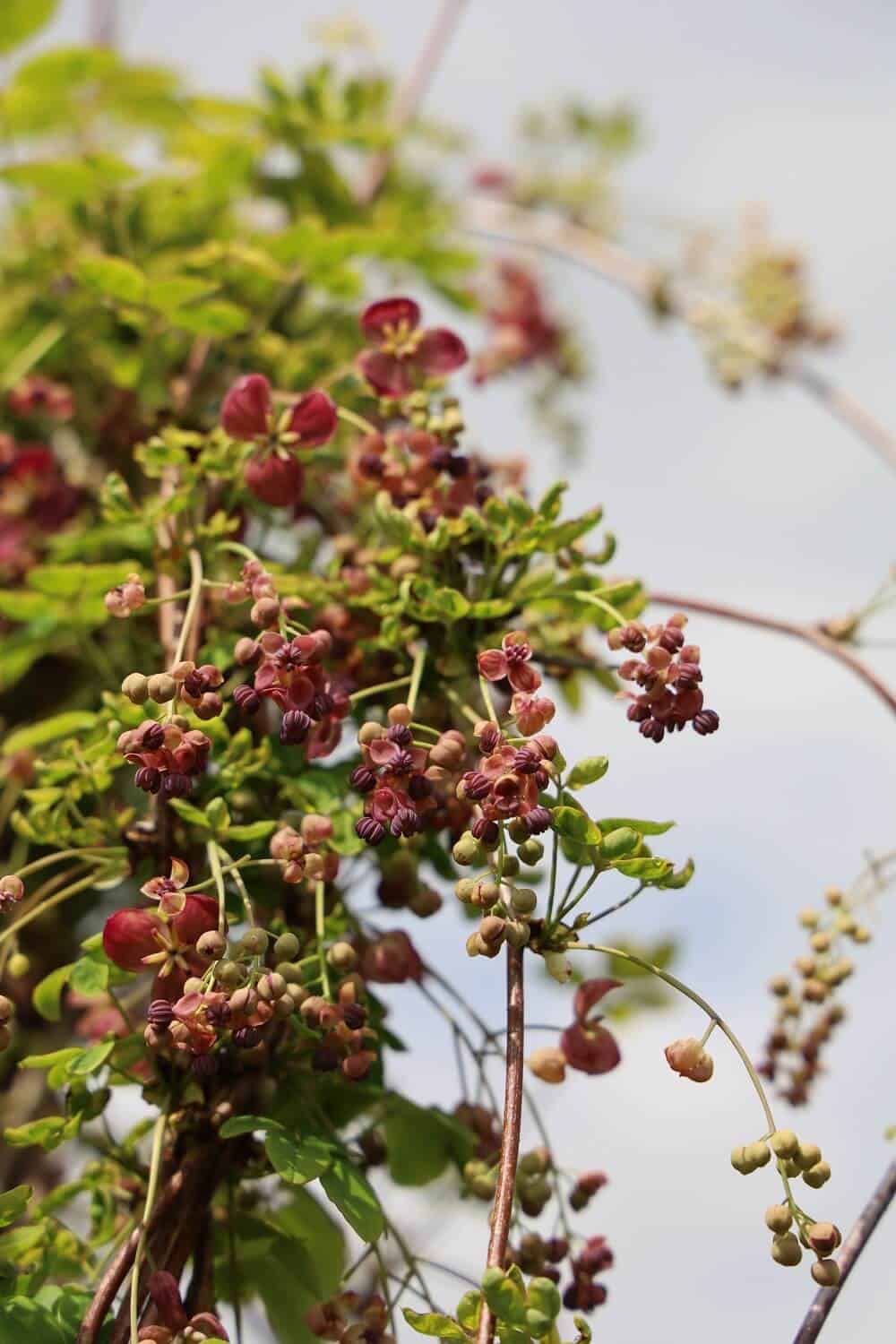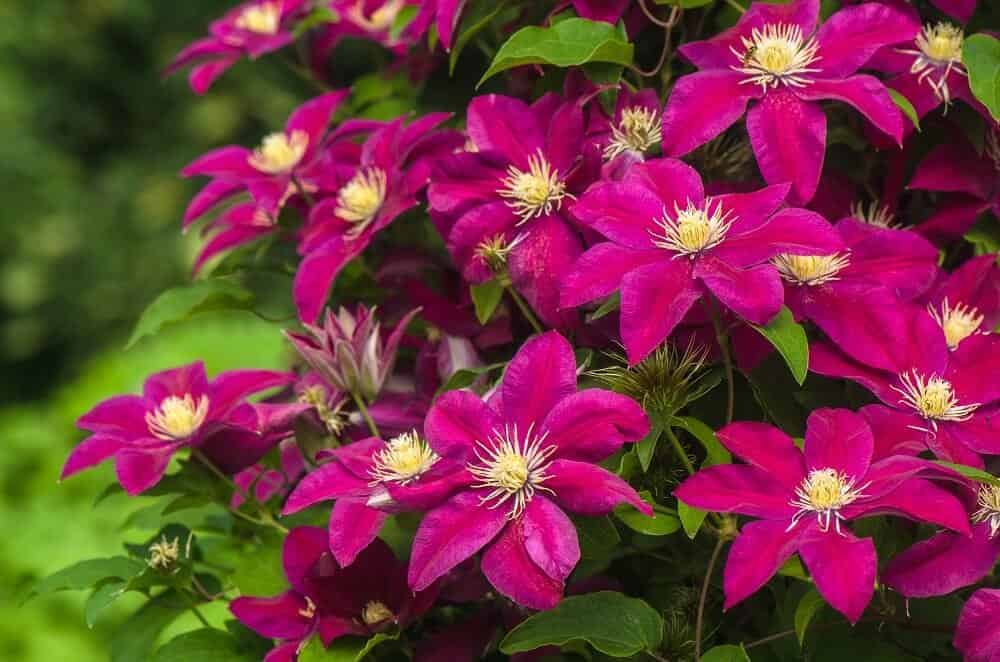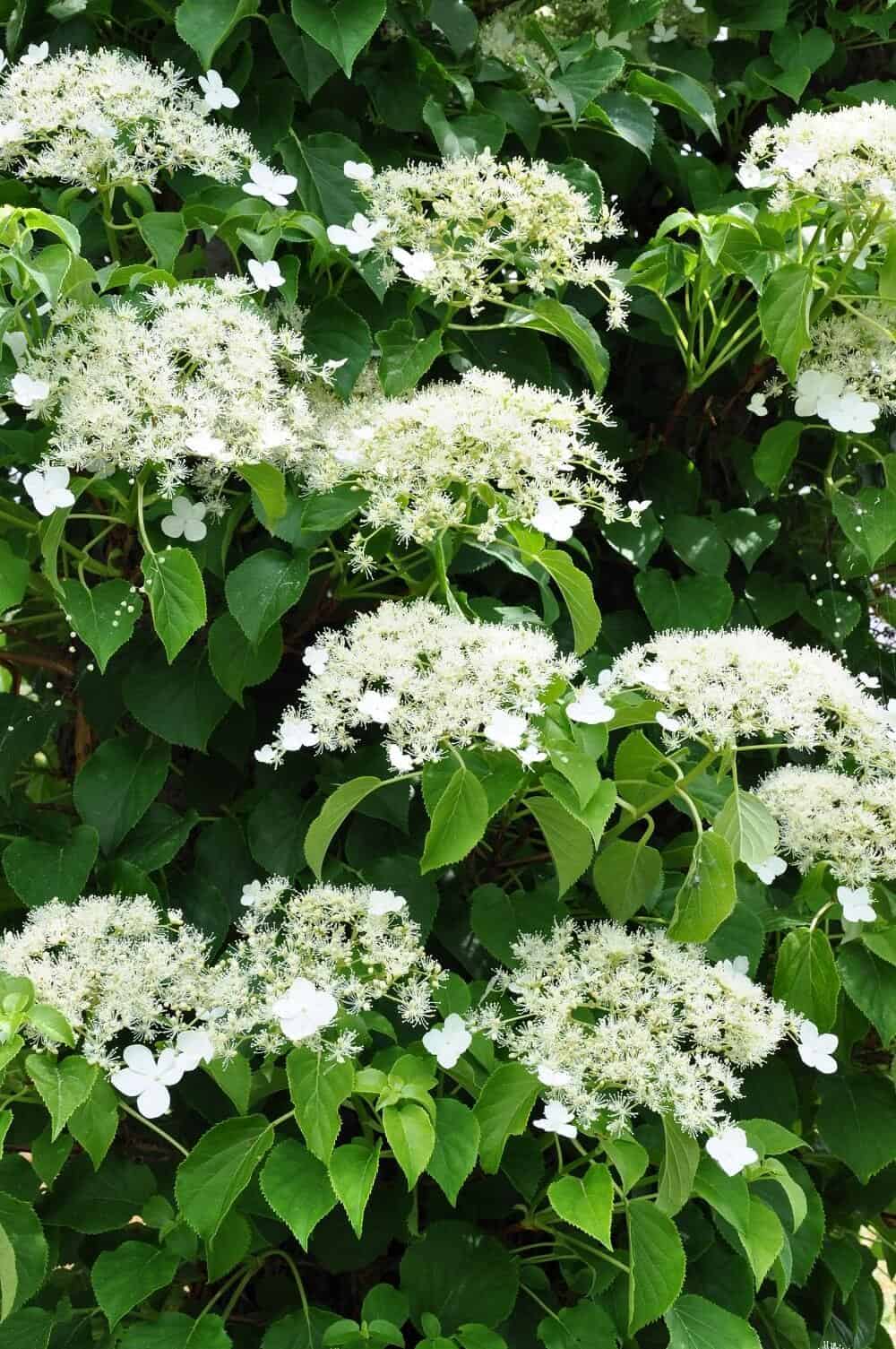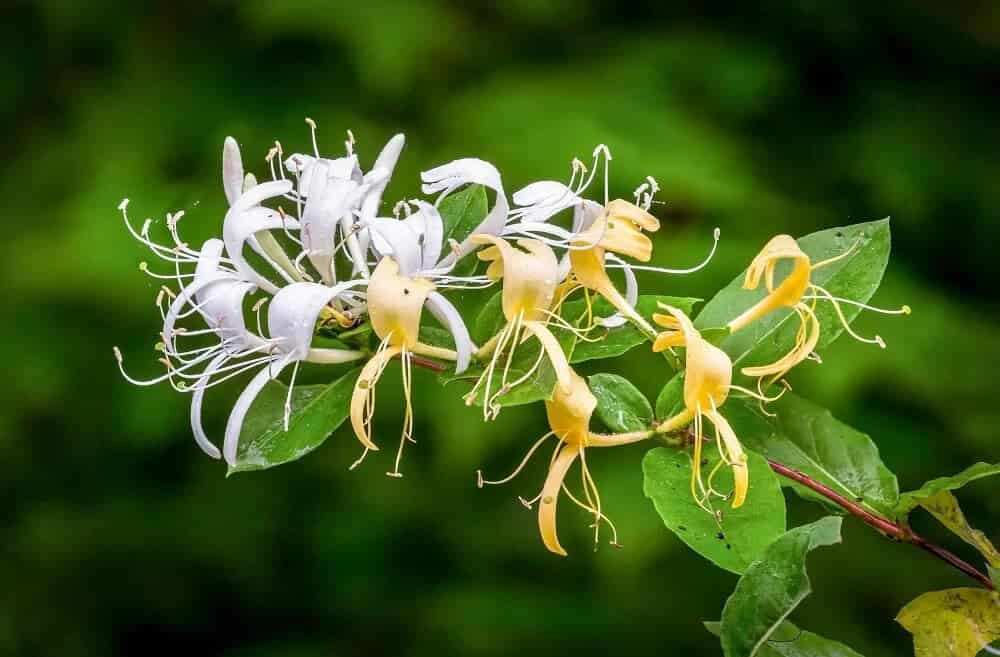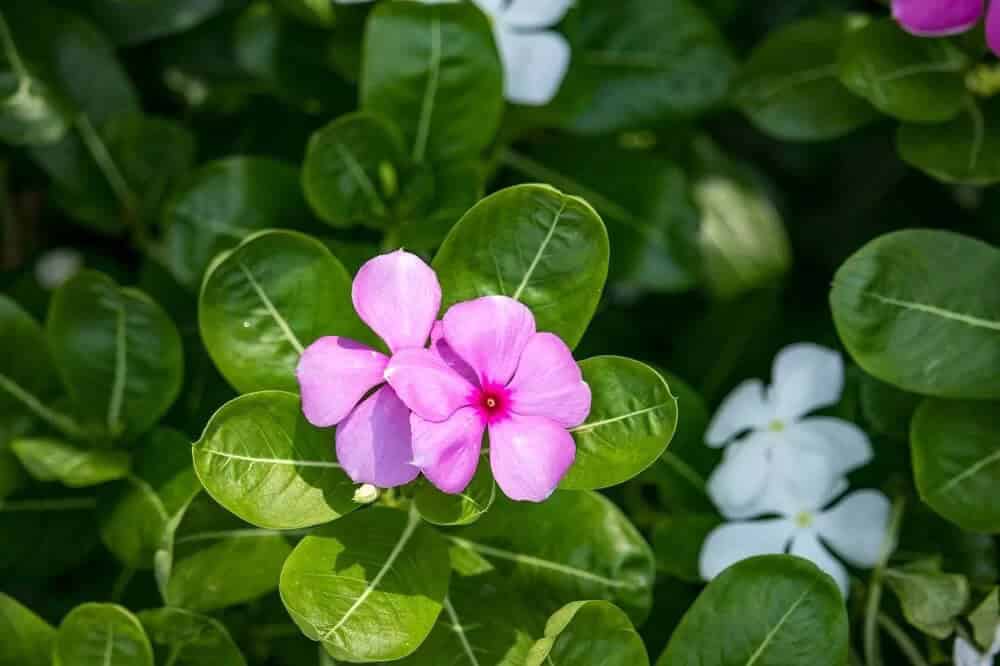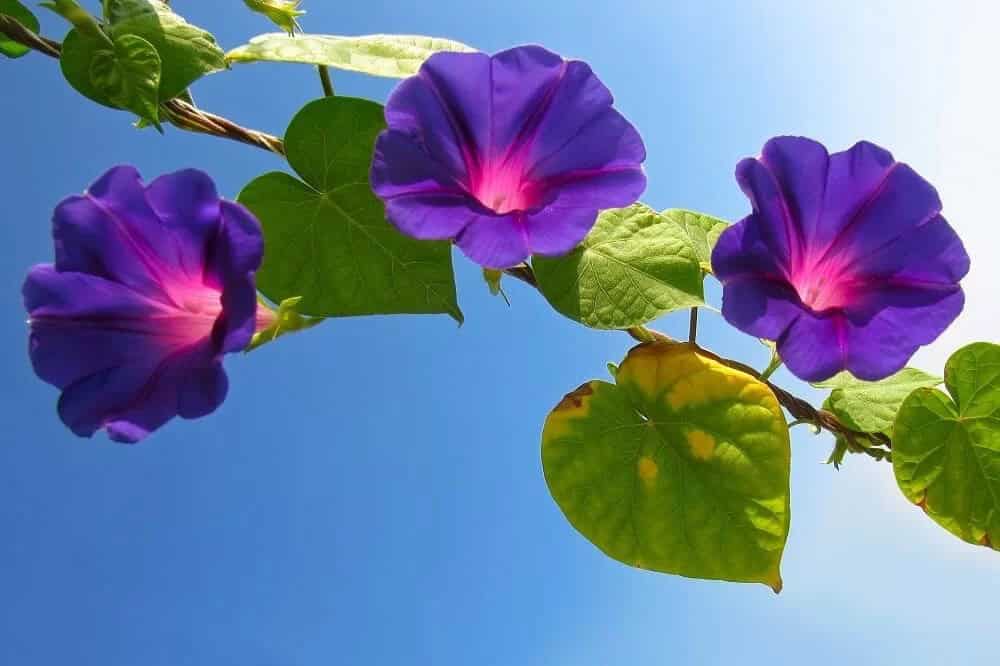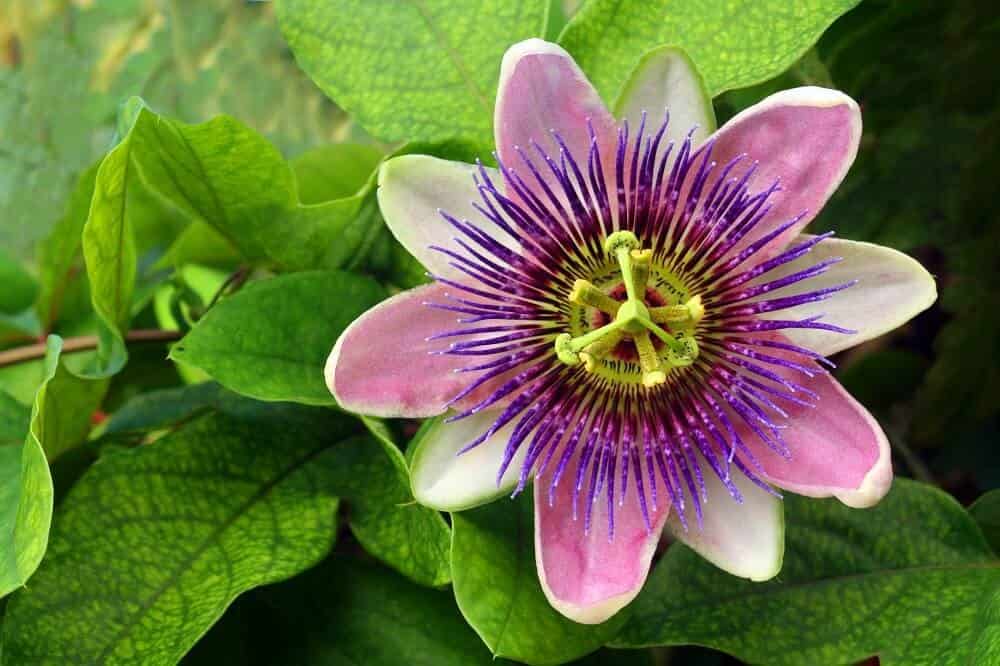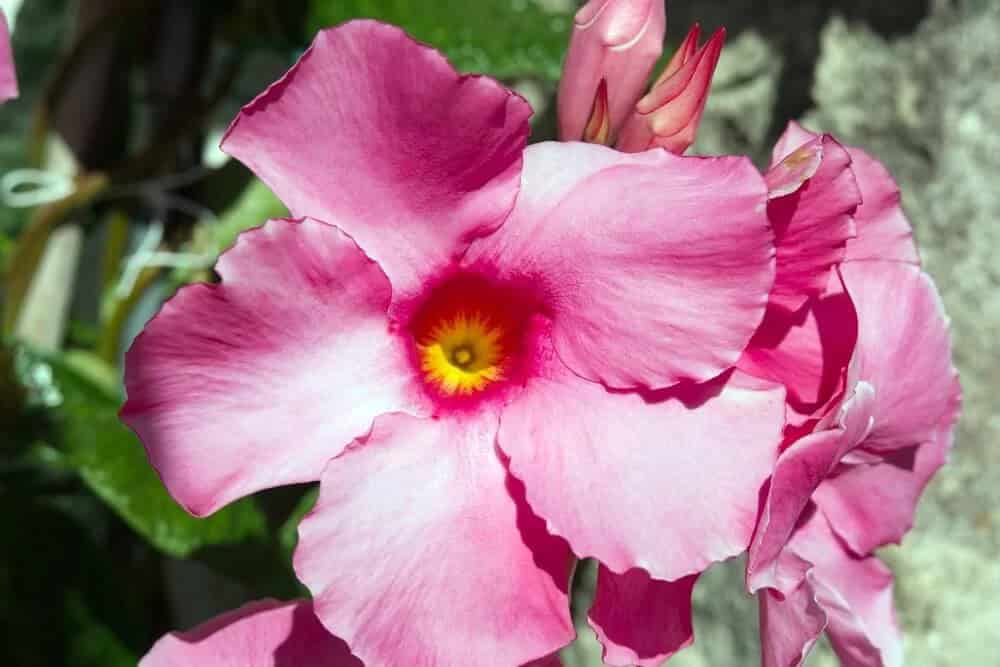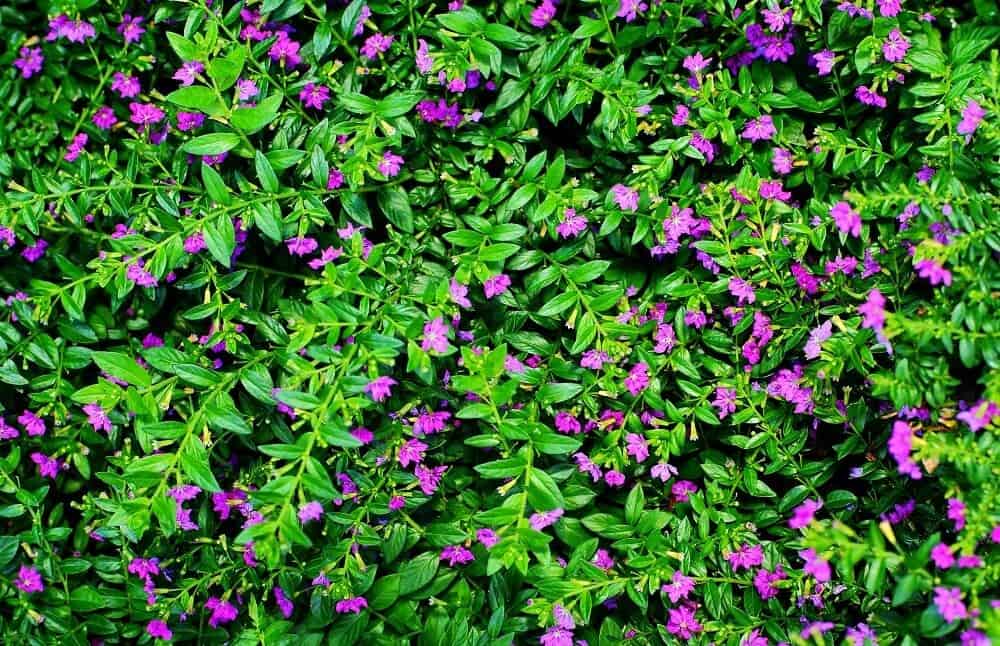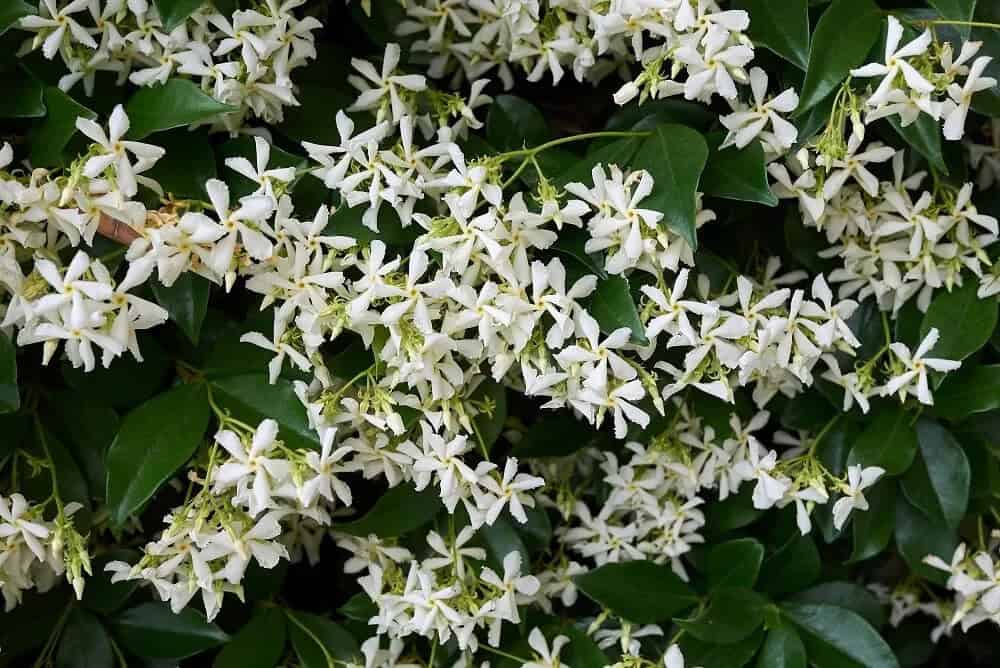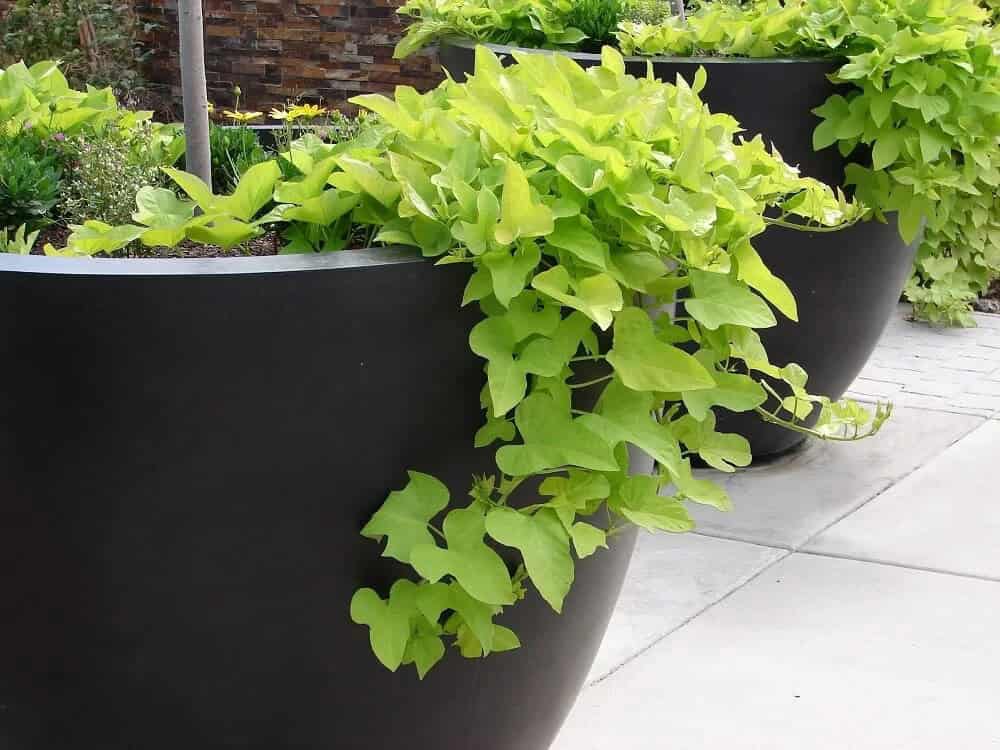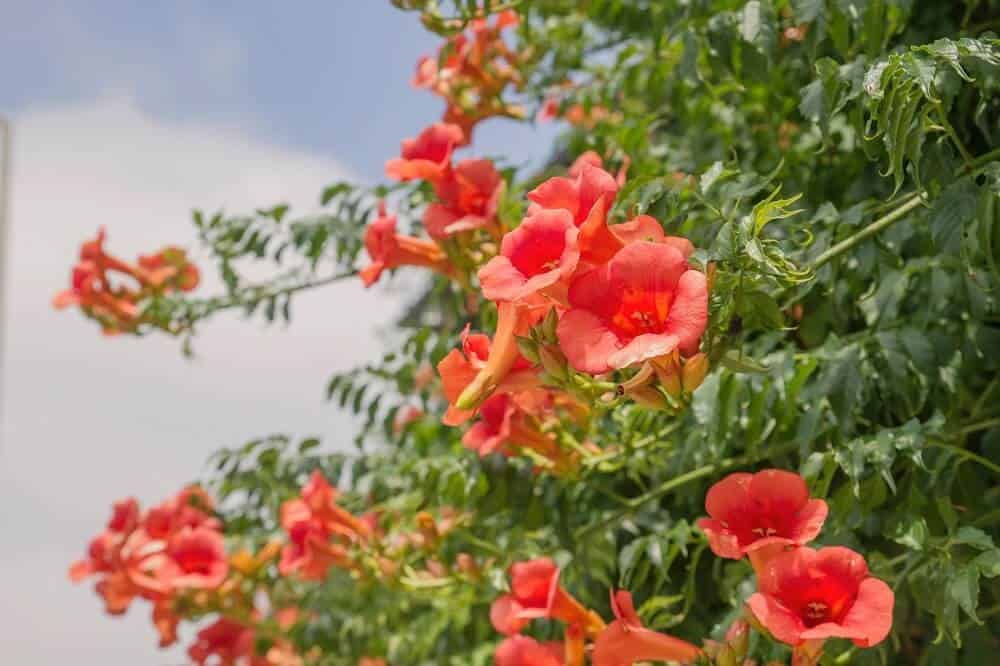Perennial flowering vines are a gardener’s delight, boasting an array of vibrant blooms and intriguing growth habits. These versatile plants can be trained to climb trellises, lattices, garden walls, and other structures, adding visual interest to any outdoor space. Yet, before selecting the perfect blooming vine for your landscape, it’s essential to understand the diverse options available.
That’s why we’ve curated a list of the top 24 perennial flowering vines, offering a comprehensive guide for gardeners to discover their ideal choice.
Key Takeaways
While perusing our list of 24 perennial flowering vines, certain recurring patterns emerge. As you explore this fascinating topic, here are five essential takeaways about perennial flowering vines that you should commit to memory:
Perennial flowering vines showcase a stunning array of blooms in diverse colors and shapes.
Climbing vines often exhibit rapid growth.
Some perennial flowering vines can be invasive species, making it crucial to exercise caution when selecting plants for certain regions.
These versatile climbers utilize various methods to ascend surfaces.
Perennial flowering vines typically require minimal upkeep, making them a low-maintenance yet visually striking addition to any garden.
24 Lovely Perennial Flowering Vines that Come Back Every Year
Allamanda Vine (Allamanda cathartica)
Throughout the Southeastern United States, the allamanda vine is a beloved perennial flowering vine that requires minimal upkeep to thrive. Its adaptability allows it to rapidly spread across nearby structures, eventually reaching heights of up to 10 feet and widths of approximately half as tall. One of its most striking features is the vibrant yellow trumpet-shaped flowers that bloom throughout its growth.
With multiple cultivars available, you can choose from a range of unique variations, each offering a distinct take on this charming climbing plant.
American Bittersweet (Celastrus scandens)
In America, one invasive species often gets a bad rap: the oriental bittersweet. Its non-native vines have taken over vast areas of land, causing environmental damage. Yet, few know about its native counterpart – the American bittersweet. This plant shares some traits with its invasive cousin, but it’s entirely harmless to the environment. One distinctive feature that sets it apart is its colorful, ornate fruits, which dangle below the leaves like miniature ornaments.
Bougainvillea (Bougainvillea)
With its impressive climbing growth habit and vibrant purple blooms, the bougainvillea is a standout among flowering vines and plants. Its ability to adapt perfectly to garden walls makes it an ideal choice for adding a pop of color to any outdoor space. The flowers themselves are striking, not only due to their intense hue but also because they are long-lasting, ensuring that your garden remains a vibrant and colorful haven for weeks on end.
Black-Eyed Susan Vine (Thunbergia alata)
While the common name of this plant may suggest a familial connection to Rudbeckia hirta, the truth is that the black-eyeds Susan vine has little to no relation to its namesake. Despite this lack of kinship, the two share some striking similarities. Both are perennials with distinctive flowers featuring bright yellow petals and dark centers.
The most notable difference, however, lies in the plant’s growth habit: whereas Rudbeckia hirta is a self-contained perennial, the black-eyed Susan vine is a climbing species that uses its tendrils to support itself as it ascends.
Bleeding Heart Vine (Clerodendrum thomsoniae)
The Bleeding Heart Vine stands out as a stunning flowering perennial vine, despite not being genetically related to its namesake ornamental plant. Its unique flowers boast striking color contrasts, often featuring white petals with deep red accents. While some varieties may exhibit different hues, the plant’s beauty is undeniable. What’s more, the Bleeding Heart Vine is remarkably low-maintenance and resilient, boasting a reputation for being pest- and disease-free.
This makes it an excellent choice for gardeners of all levels.
Cape Honeysuckle (Tecoma capensis)
The Cape Honeysuckle plant is renowned for its stunning orange blooms, featuring relatively long petals and striking central reproductive structures. But what truly sets this plant apart is its remarkable ability to adapt and thrive in various environments. Not only can it grow as a shrub, but it can also transform into a climbing vine – a feature that’s sure to delight garden enthusiasts.
To encourage this climbing habit, simply place your Cape Honeysuckle near a structure it can ascend or train the plant to climb from an early age.
Cardinal Climber (Ipomoea quamoclit)
What sets the cardinal climber apart from other perennials is its striking appearance, which boasts several distinct features. For starters, the vibrant red hue of its blooms is nearly unmatched in the world of gardening, making it a standout specimen in any garden. The flowers themselves also possess an upright growth habit, ensuring they’re always visible and attention-grabbing.
Furthermore, the intricate shape of each bloom, featuring a saucer-like upper section and a long tubular center, adds to the plant’s unique charm. Overall, the cardinal climber’s captivating appearance makes it a standout among its peers in the perennial flowering vine family.
Chocolate Vine (Akebia quinata)
Unlike many flowering plants, the chocolate vine boasts an unmistakable aroma reminiscent of its namesake – chocolate. The fragrance is so potent that it’s hard not to be drawn in by its allure. But it’s not just the scent that’s distinctive; the flowers themselves have a deep, rich purple hue that evokes the color of high-quality cocoa.
And when it comes to light exposure, the chocolate vine is surprisingly versatile – it can thrive in both areas with full sunlight and those that receive only partial shade.
Clematis (Clematis)
The clematis vine, also known as the leather flower, boasts stunning flowers with six broad petals that can shift from pure white to deep purple and blue hues. Some blooms may even display two distinct colors simultaneously. Measuring several inches in diameter, each flower is a sight to behold. When they bloom en masse, a clematis plant quickly becomes the garden’s crowning glory.
What’s more, these vines look particularly striking when their slender stems weave through ornamental trellises, creating a harmonious blend of beauty and functionality.
Climbing Hydrangea (Hydrangea anomala subsp. petiolaris)
While shrub-form hydrangeas are certainly stunning, it’s not surprising that their climbing counterparts offer equally breathtaking blooms. However, it’s essential to note that there is another perennial vine that also claims the title of ‘climbing hydrangea.’ Specifically, Hydrangea anomala subsp. Petiolaris is a true member of the Hydrangea genus and boasts a unique ability to climb.
When healthy, climbing hydrangeas can grow into substantial plants, adding significant mass to your landscape designs. Additionally, certain varieties may produce clusters of pink flowers instead of the typical white blooms, offering an exciting twist on this beloved flowering vine.
Cup and Saucer Vine (Cobaea scandens)
The cup and saucer vine is a climbing plant that takes on a whimsical appearance for most of the spring and summer months, evoking an image of a lively tea party in full bloom. This unique aesthetic is largely attributed to the distinctive shape of its showy flowers. The blooms are characterized by petals that form a delicate cup shape with intricate, frilly edges, while the leaves at the base of each flower create a similarly ornate saucer shape.
Notably, this plant’s growth rate is quite rapid and can eventually exceed 30 feet in size, making it a striking addition to any garden.
Honeysuckle (Lonicera japonica)
The origins of the honeysuckle vine can be traced back to East Asia, where it’s sometimes referred to as Japanese honeysuckle. In its natural habitat, this versatile plant has a tendency to cling to tall forest trees, scaling heights of up to 40 feet or more. Its appeal in garden settings lies in its vibrant, fragrant flowers, which make it an attractive choice for climbing vines.
However, before planting honeysuckle, it’s essential to consider its invasive tendencies in certain regions, even if you don’t reside within these areas. In fact, the plant’s tendency to spread can still cause difficulties, regardless of its level of invasiveness.
Madagascar Periwinkle (Annual vinca)
The vibrant blooms of the Madagascar periwinkle vine boast an irresistible charm. The intricate flower structure features five delicate petals arranged in a pinwheel pattern around a colorful center, occasionally exhibiting a serene white hue or striking pink and magenta combinations. Meanwhile, the lush foliage comprises numerous glossy oval-shaped leaves that create a stunning backdrop for the flowers’ kaleidoscope display.
As the various colors of the blooms and foliage intertwine, they form an ideal harmony for many gardens.
Morning Glory (Ipomoea purpurea)
The Ipomoea genus is home to more than just the iconic morning glory plant, but it’s hard to ignore its striking trumpet-shaped flowers. The common morning glory vine produces blooms that face upwards towards the sky, with a gentle gradient from soft lavender at the top to pure white at the base of each flower. These delicate flowers are supported by slender vines that can effortlessly weave their way through even the most rigid garden structures.
In fact, the understated elegance of the morning glory plant often creates an intriguing contrast with the sturdiness of its surroundings.
Passion Flower (Passiflora incarnata)
When it comes to planting passion flower vines, it’s essential to recognize that the term ‘passion flower’ encompasses multiple species. Some varieties are perennial flowering vines, while others aren’t. Additionally, many passion flower plants, regardless of whether they grow as vines or not, produce edible fruit. However, the primary reason people tend to be enthusiastic about passion flowers is the unique characteristics of their blooms.
The large, striking flowers feature unusual central structures and vibrant petals, making them a standout attraction.
Perennial Sweet Pea (Lathyrus latifolius)
Perennial sweet peas are a captivating herbaceous climber that thrives in well-suited conditions. Capable of reaching impressive heights of over 10 feet within a single growing season, this charming plant is characterized by its vibrant pink flowers that resemble delicate orchids. Not only do these blooms provide sustenance for various pollinators, but they also serve as a nectar-rich haven for wildlife.
Interestingly, perennial sweet peas have been known to repel deer, making them an attractive choice for gardeners seeking low-maintenance, resilient flora.
Rocktrumpet (Mandevilla)
Rocktrumpet, or Mandevilla, is a collective term for several species of flowering perennials that grow as vining plants. These varieties within the genus exhibit distinct differences in flower color, characteristics, size, and growth habits. While each variety tends to reach maturity between 8 and 15 feet tall, they share a common trait: most are native to South America and thrive in warm climates. Additionally, rocktrumpet plants are known for producing vibrant flowers of diverse colors.
Snail Vine (Cochliasanthus caracalla)
While the name ‘snail vine’ might suggest otherwise, this flowering vine is actually quite rapid in its growth. Reaching heights of up to 10 feet in just one summer, it’s a plant that demands attention and requires careful consideration of its growing conditions. As with many plants on this list, the snail vine boasts stunning flowers and foliage, but only when provided with the right amount of light.
In areas with intense sunlight, too much direct exposure can be detrimental to the plant’s survival. However, find the perfect balance and the snail vine will thrive, producing knobby blooms that evoke a curious resemblance to their namesake – albeit in a most unexpected way.
Snapdragon Vine (Maurandya scandens)
The snapdragon vine is an excellent choice for a low-maintenance climbing plant or ground cover. It thrives with minimal watering, which helps to promote its vibrant blooms and lush green foliage. The flowers themselves are a stunning shade of pink or purple and can be scattered throughout the foliage, adding visual interest to your garden.
One of the snapdragon vine’s most impressive features is its ability to grow by twining its vines around supporting structures like trellises, arbors, and other garden features with gaps. This makes it an ideal choice for adding a pop of color and texture to these areas. Even without a support structure, the snapdragon vine can still make for a beautiful ornamental ground cover, providing a lush carpet of greenery and delicate blooms.
Star Jasmine (Trachelospermum jasminoides)
Star jasmine’s allure in the garden world stems largely from its stunning blooms, comprising tiny, star-shaped flowers that burst forth in abundance during the blooming period. This copious display not only draws attention but also releases a sweet fragrance, welcoming visitors to your property with an irresistible aroma. The plant’s foliage is equally impressive, generating a dense, lush carpet of greenery that can envelop its support structure as it matures.
Sweet Autumn Clematis (Clematis terniflora)
The sweet autumn clematis, the next plant on our list, shares similarities with its predecessor, star jasmine, in terms of flower shape and fragrance. Its small white blooms, featuring a slender star-like appearance, emit a sweet aroma that earns it its name. Like many plants, the sweet autumn clematis thrives under average care, making it an attractive option for those seeking a low-maintenance ornamental flowering ground cover.
To achieve this dense look, simply ensure the plant doesn’t climb nearby structures or plants, instead allowing it to spread out and create a lush display.
Sweet Potato Vine (Ipomoea batatas)
While the sweet potato vine may not be a reliable source for harvesting the starchy root, it’s a showstopper when it comes to its striking foliage. The leaves of this ornamental species can display deep purple hues or brighten up with lime green tones, and their unique shape makes them a visual treat. In fact, blooming is relatively rare for this plant, but when it does, the sweet potato vine’s tubular flowers burst forth in a rich, regal purple, sure to leave onlookers impressed.
Trumpet Creeper (Campsis radicans)
As you gaze upon the trumpet creeper, its vibrant presence is impossible to miss. This remarkable plant not only boasts an impressive array of flowering varieties but also excels at climbing and spreading its tendrils effortlessly. During the warmer months, the vine erupts into a kaleidoscope of orange, trumpet-shaped blooms that captivate both humans and pollinators alike.
The allure of these flowers lies not only in their stunning beauty but also in their role as a vital source of sustenance for pollinators seeking to collect nectar and facilitate pollination. In many ways, the trumpet creeper is the ultimate choice for covering solid fences or garden walls, as it will flow elegantly over the top when mature, creating an breathtaking cascade of orange that’s sure to leave onlookers in awe.
Wisteria (Wisteria sinensis)
While Chinese wisteria (Wisteria sinensis) can be a stunning addition to any garden, it’s essential to approach its cultivation with caution. This beautiful yet aggressive plant has the potential to become invasive in many areas, requiring regular pruning and control measures to prevent it from overpowering other plants.
However, if you’re able to keep it in check, wisteria will reward you with an unparalleled bloom time featuring numerous large, dangling panicles of light shimmering purple flowers. For some, this breathtaking display is sufficient justification for the necessary maintenance.
Frequently Asked Questions About Perennial Flowering Vines
What is the Easiest Flowering Vine to Grow?
Perennial flowering vines, though belonging to various genera, share a common trait – they’re remarkably easy to care for. It’s challenging to pinpoint a single species as the most effortless to tend to, given their adaptable nature and ability to thrive in preferred growing conditions. When well-cared for, these plants not only display vibrant blooms but also exhibit rapid growth, showcasing their vigor and tenacity.
Among this diverse group, clematis vines, trumpet vines, and black-eyed Susan vines are notable examples of low-maintenance flowering vine options that can bring a touch of elegance to any setting.
Which Vines Flower is the Longest?
While perennial flowering vines often boast stunning blooms, it’s not uncommon for these beauties to have a relatively short shelf life. However, there are many exceptions to this rule. Take Bougainvillea, for example – its vibrant flowers aren’t just abundant but also linger on the vine for an extended period of time. Similarly, honeysuckle vines and numerous other varieties offer long-lasting blooms that can add beauty and interest to your outdoor space for weeks or even months.
What is the Meaning of Perennial Vine?
A perennial vine can be defined by its individual components. ‘Perennial’ means the plant will come back year after year, unlike annuals which complete their life cycle in a single growing season. The term ‘vine’ is a catch-all for climbing plants, so when combined with ‘perennial’, it refers to species that not only return annually but also possess a climbing growth habit.
This broad definition encompasses a wide range of plant species, making the category of perennial vines diverse and expansive.
Are Climbers Perennial?
While perennials dominate the world of climbing plants, there’s a notable subset of flowering vines that thrive as annuals. Just like their perennial counterparts, the growth habits of these annual climbers depend heavily on geographical location. In warmer climates, for instance, certain species will naturally grow as annuals in regions with mild winters. This means they’ll need to be replanted each year to ensure a continuous display of blooms.
The suitability of an annual climbing plant for your specific area is influenced by local climate and temperature, making it essential to consider these factors when selecting the perfect flowering vine for your garden.
Is Clematis a Perennial?
Clematis vines, being perennials, can be expected to return year after year. As spring awakens, they begin to grow and eventually produce large, showy flowers that bloom from late spring to early summer. With the onset of autumn and winter, the vine will naturally die back, prompting you to prune it almost to ground level. Come spring’s arrival, new growth can be expected, signifying a fresh start for your clematis.
For many plant enthusiasts, cultivating perennial flowering vines like clematis is an alluring aspect of gardening that gives rise to several pressing questions. To address these concerns, we’ll delve into the most frequently asked ones.
24 Assorted Perennial Flowering Vines that Offer Something for Everyone
Perennial flowering vines offer a wonderful advantage: they’re incredibly low-maintenance and can quickly thrive in your garden. Once you’ve chosen the perfect species for your outdoor space, you won’t have to wait long before enjoying the fruits of your labor. Among the many options available, some perennial flowering vines stand out as being particularly popular and easy to care for.
These include the ones listed here, which are all great choices for adding a touch of elegance to your property every year.






